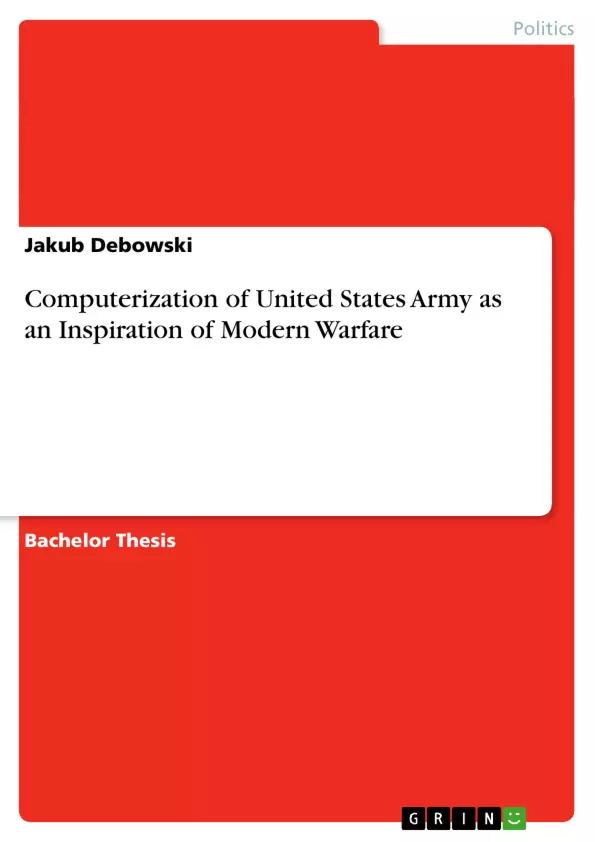This paper presents a detailed analysis of subjectively chosen aspects of computerization of the United States Army, in the context of conducting modern warfare operations with the emphasis on military computer simulations. It is of great difficulty to analyze every element of such a broad, and at some points multi-layered and complex subject. Nevertheless, it is vital to indicate and establish boundaries of the areas of the subject that will be the target of this theoretical study, which mainly concentrates on the origins and development of the first military computer, Virtual Reality computer training simulations, and chosen aspects of the use of computers with emphasis on their indispensability on the modern battlefield.
The aim of this paper is to prove that the invention of multiple technologically advanced computer devices, and their incorporation into the United States Army, redefined the form of conducting complex military operations, and considerably improved the training, and educational process of American soldiers, by creating innovative methods based on state of the art computer technology.
Inhaltsverzeichnis (Table of Contents)
- Introduction
- The origins of the first military computer.
- The motivations for launching the “PX project”
- The idea behind the “PX project”
- ENIAC Facts and reliability..
- Military computer based simulations
- Team based virtual tarining...
- Virtual Reality as form of overcoming post-traumatic stress disorder
- Computer games as a form of soldier training.
- America's Army―The Virtual Soldier Experience......
- DSTS The future of solidier training
- Computers on the modern battlefield.
- Cyber weapons
- Miliary aspects of the Global Positioning System (GPS)
- Werable computers and advanced warfighter military programs.
- Final remarks
Zielsetzung und Themenschwerpunkte (Objectives and Key Themes)
This paper provides a detailed analysis of the computerization of the United States Army, particularly focusing on military computer simulations and their role in modern warfare. The paper explores the origins and development of the first military computer, the use of virtual reality simulations for training and PTSD recovery, and the essential role of computers on the modern battlefield.- The origins and evolution of the first military computer.
- The use of Virtual Reality simulations for training and PTSD recovery.
- The impact of computers on the modern battlefield.
- The role of computer games in military training and recruitment.
- The integration of advanced computer technology into the United States Army.
Zusammenfassung der Kapitel (Chapter Summaries)
The first chapter examines the origins of the first military computer, specifically exploring the motivations and ideas behind the "PX project." It delves into the development of the ENIAC computer and its impact on military operations. The second chapter focuses on the use of military computer-based simulations, including team-based virtual training, the application of Virtual Reality in overcoming post-traumatic stress disorder (PTSD), and the use of computer games as a form of soldier training. It also discusses the "America's Army" program and the "DSTS" initiative, which represents the future of soldier training. The third chapter examines the practical use of computers on the modern battlefield, highlighting the various types of computer equipment currently used by the United States Army and those that will be employed in the future. The chapter analyzes specific examples of indispensable computer equipment, including cyber weapons, the Global Positioning System (GPS), and wearable computers.Schlüsselwörter (Keywords)
This paper focuses on the computerization of the United States Army, exploring themes such as military computer simulations, virtual reality training, post-traumatic stress disorder (PTSD), cyber weapons, Global Positioning System (GPS), and wearable computers. The key concepts revolve around the development and integration of advanced computer technology into military operations, particularly focusing on its impact on training, education, and combat effectiveness.- Quote paper
- Jakub Debowski (Author), 2012, Computerization of United States Army as an Inspiration of Modern Warfare, Munich, GRIN Verlag, https://www.grin.com/document/272683



